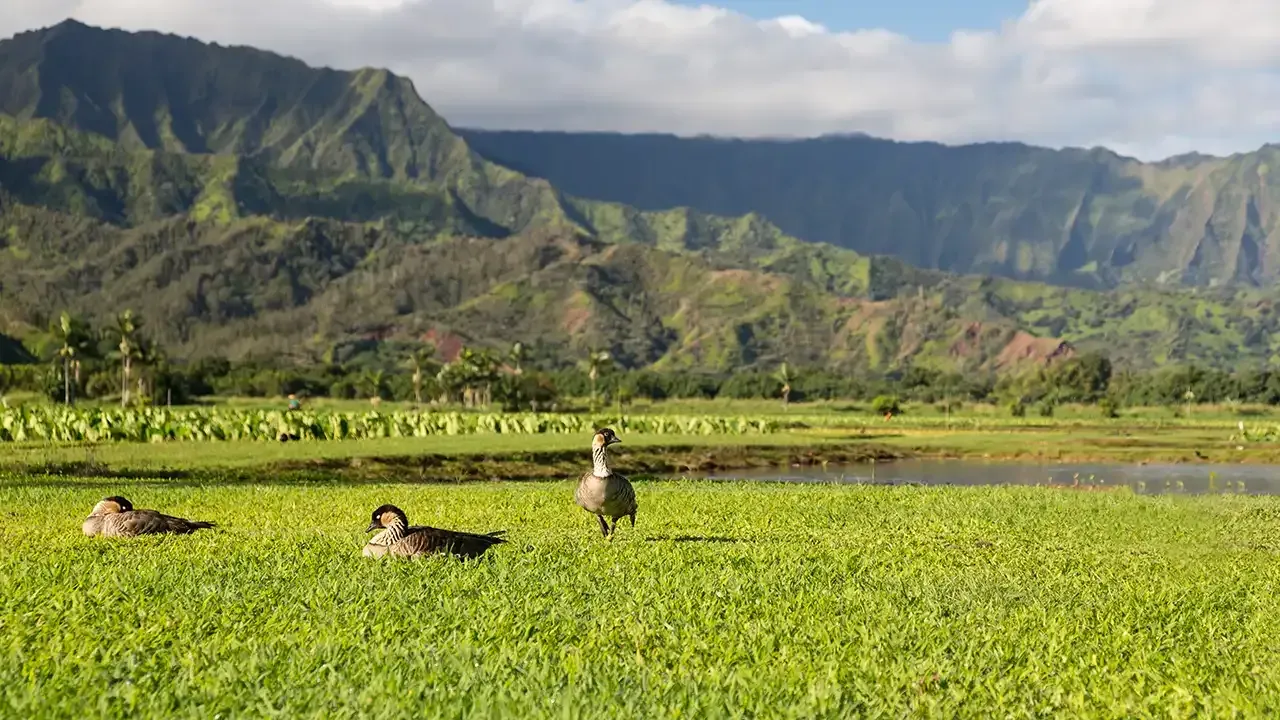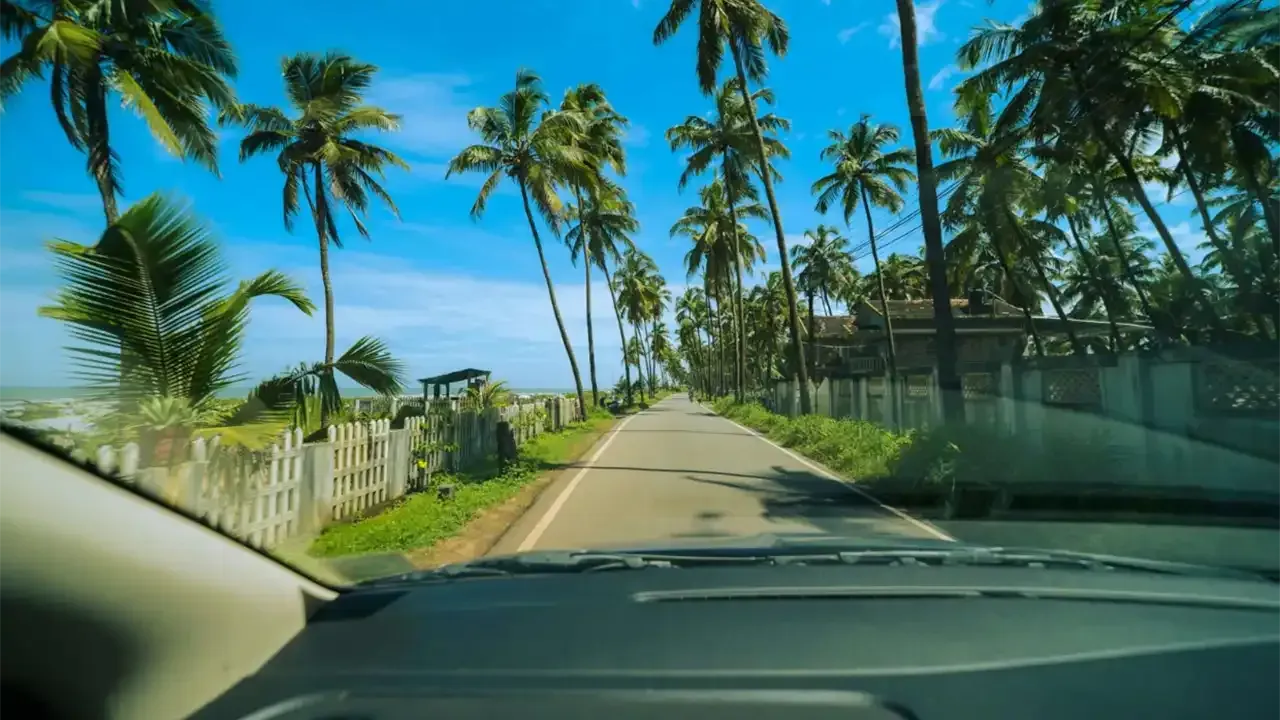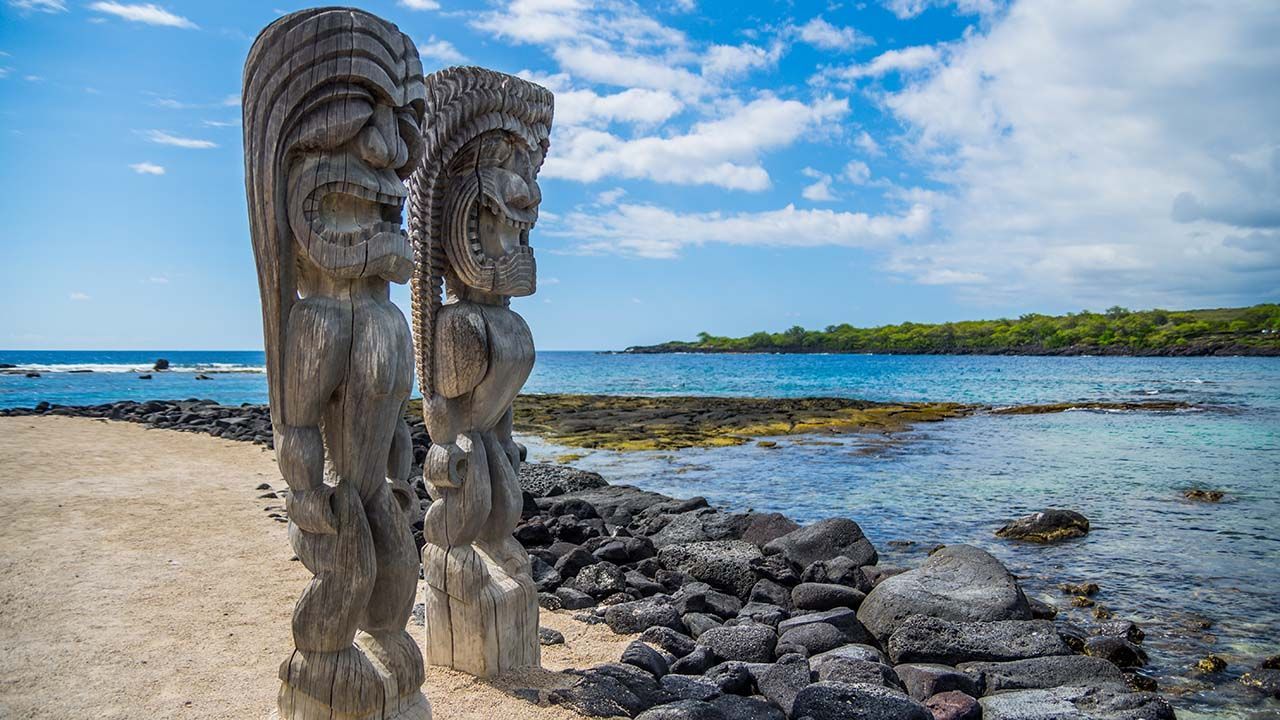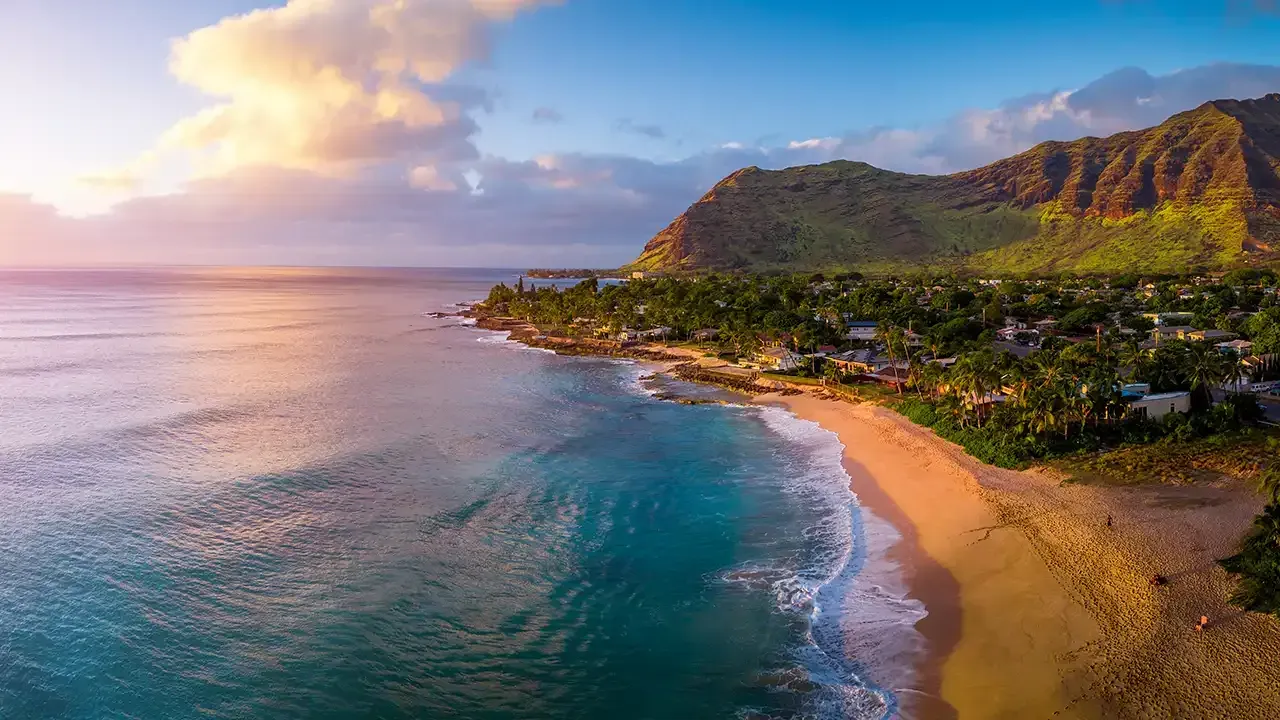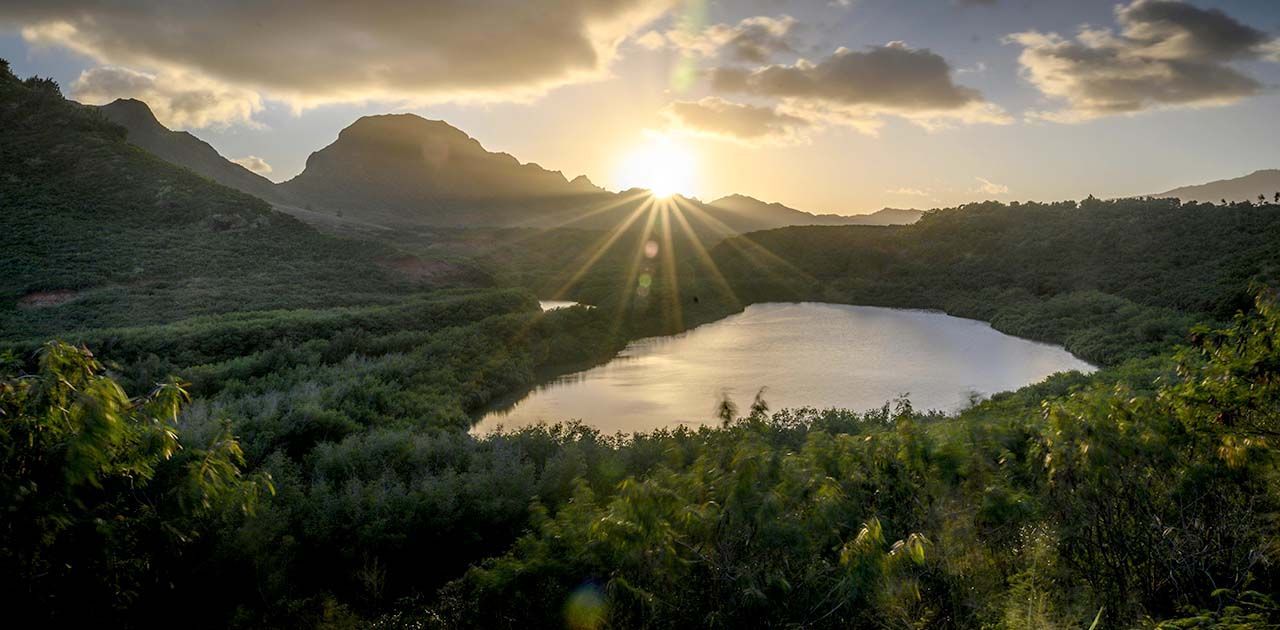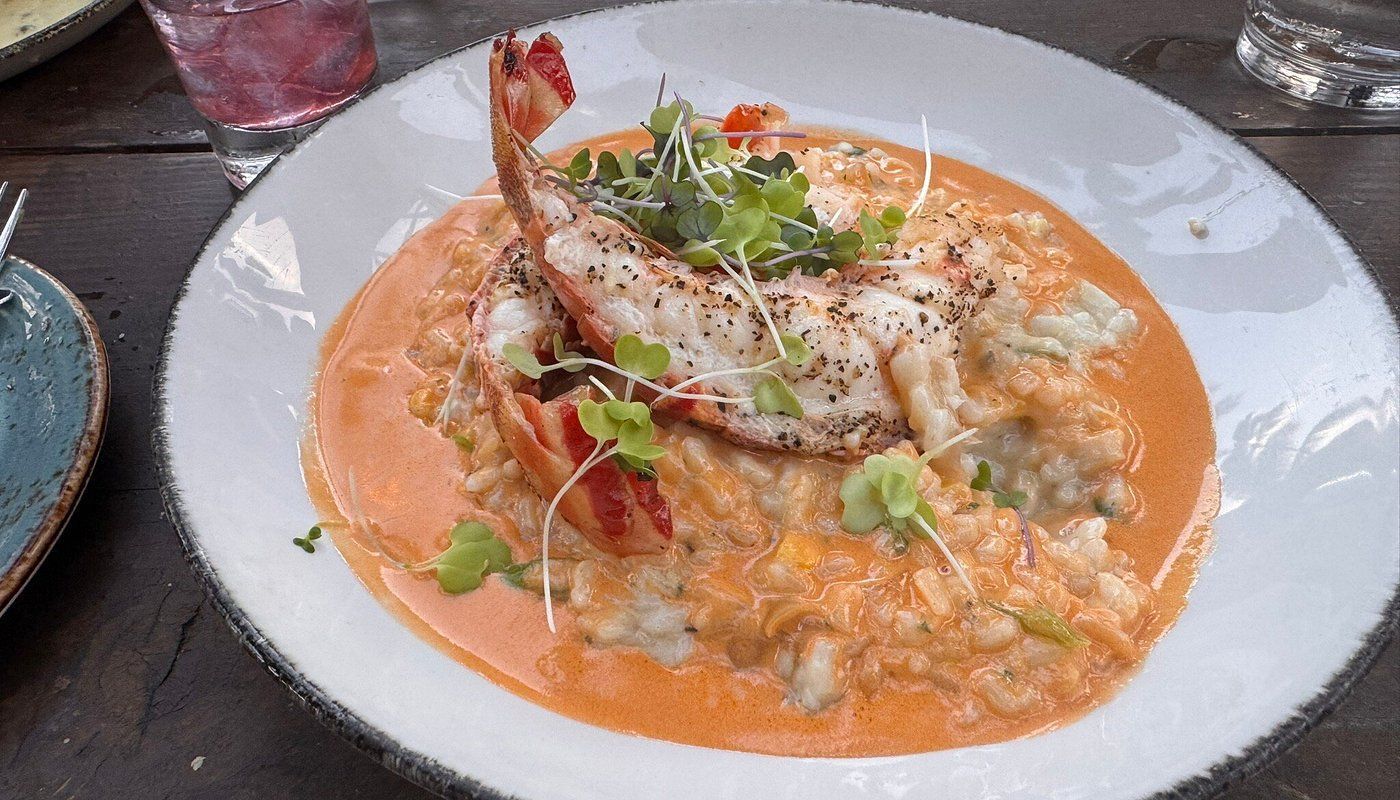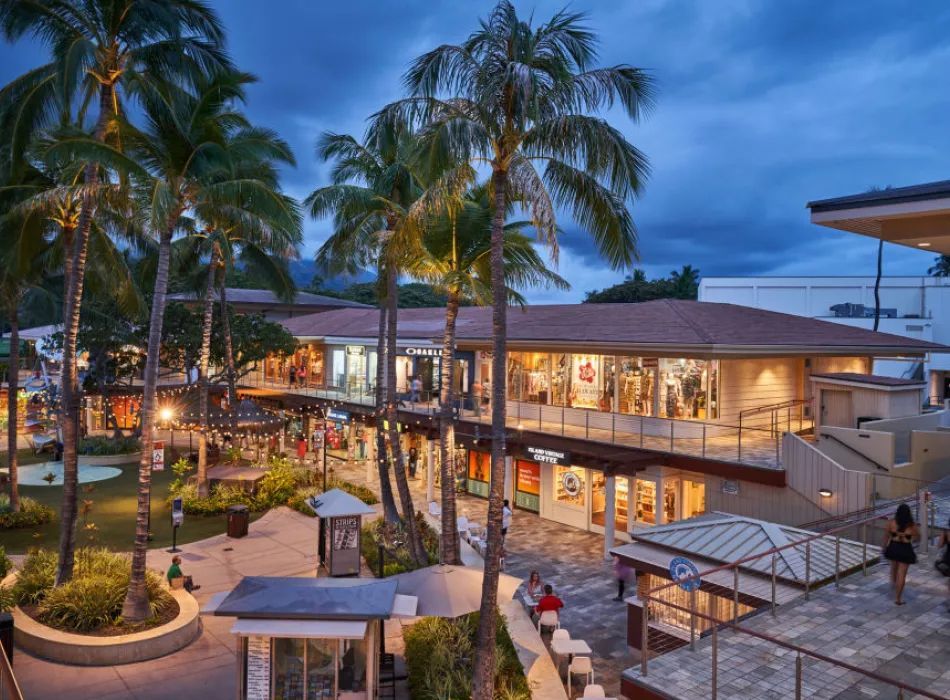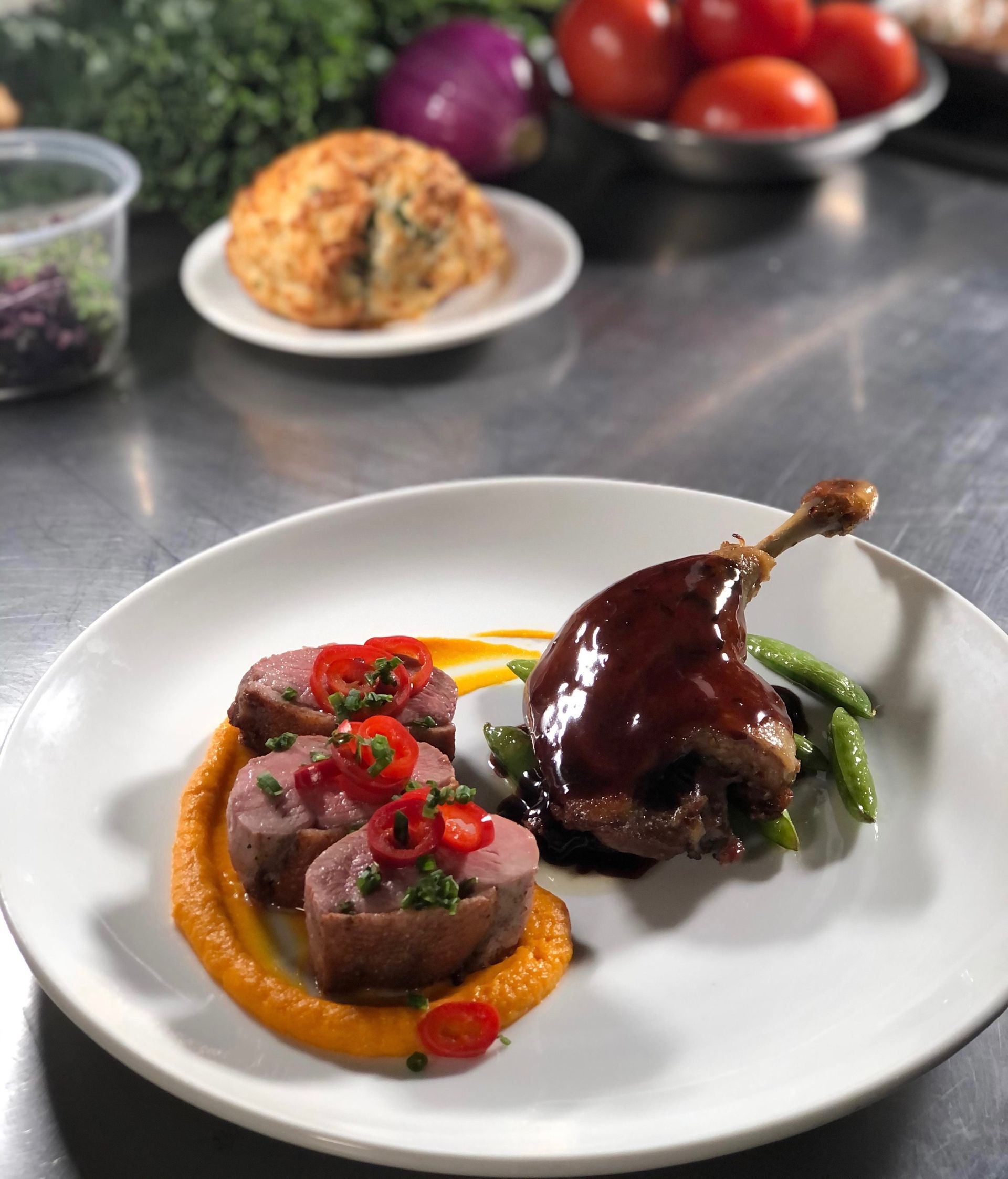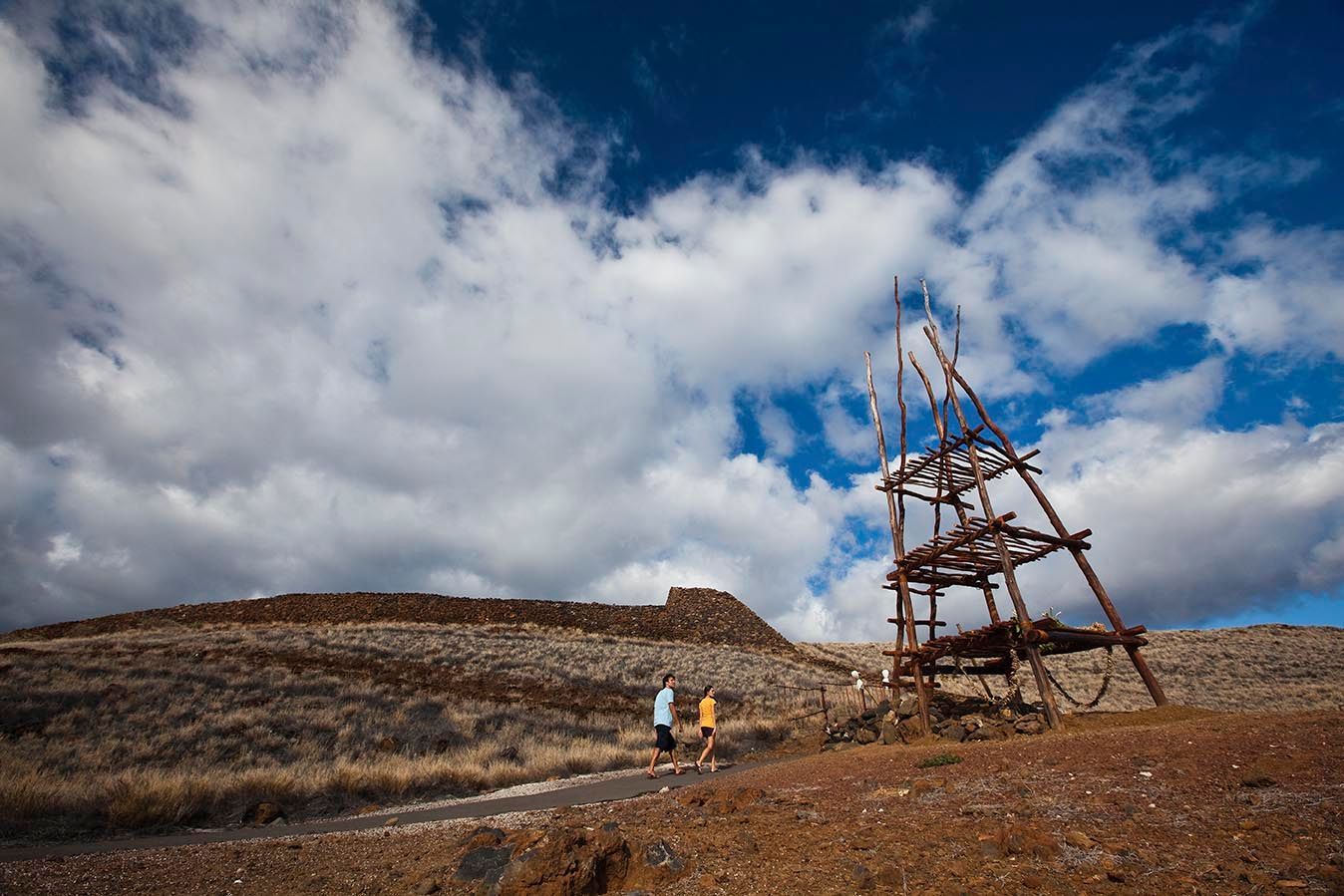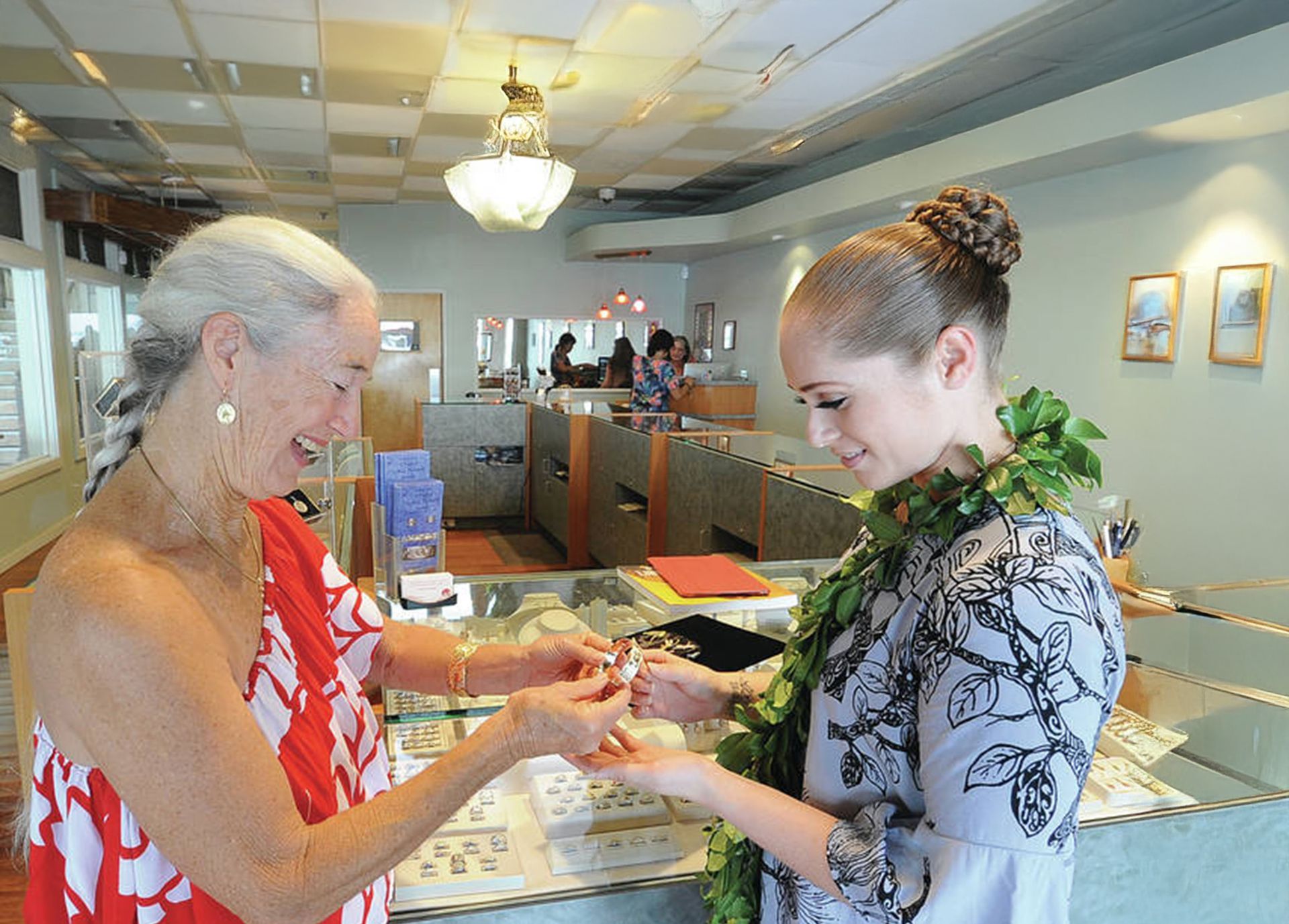Hōkūle‘a Returns Home
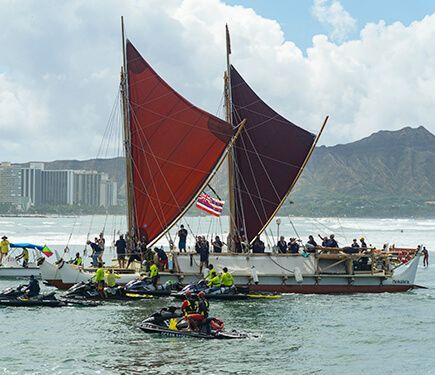
The return of the deep-sea voyaging canoe Hōkūle‘a to Hawai‘i on June 17 holds deep meaning for Hawai‘i and the Hawaiian people, and speaks to the strong leadership of the Polynesian Voyaging Society and the many volunteers who have helped along the way. Beyond the epic accomplishment of covering 60,000 nautical miles and visiting more than 150 ports, 23 countries and eight UNESCO Marine World Heritage sites during a three-year voyage, the roots of Hōkūle‘a and her mission are embedded in the courage, ingenuity and legacy of exploration that emboldened the first Polynesians to come to Hawai‘i.
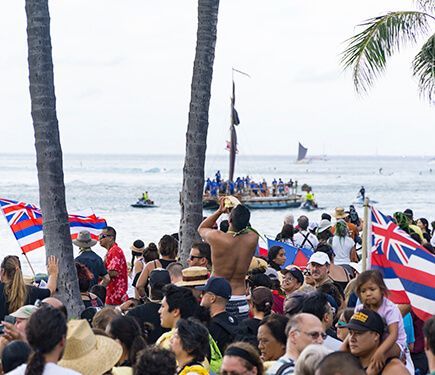
In a world reliant upon GPS technology, Hōkūle‘a and her crew traveled across the ocean guided only by the stars, waves, winds and birds. This is the way of the non-instrument navigator, or wayfinder. And this is what makes Hōkūle‘a’s voyage so inspiring and incredible.
Built and launched in the 1970s, Hōkūle‘a came to represent a resurgence in Hawaiian culture and practices following successful ocean voyages that included Tahiti, Aotearoa and Rapa Nui. “Proud to be Hawaiian” arose in the isle consciousness.
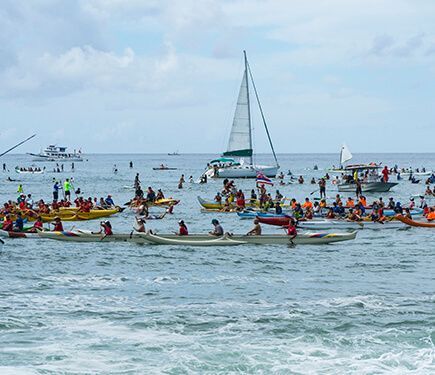
HŌKŪLE‘A HOMECOMING
Upon arriving at Magic Island at about 8 a.m., I encountered major congestion. But I hadn’t expected anything less. Of course, tents had already been set up early in the morning along the perimeter and every open space along the rocky edges of Magic Island were already spoken for.
A small raised platform for media could fit only so many people, so after awhile, I headed out toward the mouth of the channel between Magic Island and Ala Wai Harbor where I could stake out a spot to see Hōkūle‘a and her entourage. The paved walkway was just as bad as Christmas rush in a shopping mall, but finally, a spot with a clear view of the waterway!
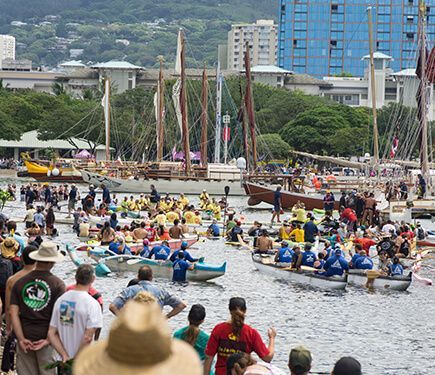
Nearly 50,000 of us eagerly waited under blissfully cloudy skies (blissful because once the sun broke through, it burned!). Four local voyaging canoes had entered earlier and were already anchored in the channel. The Fa‘afaite canoe from Tahiti came in amid cheers and the deep bellow of conch shells. Then Hikianalia arrived with more celebratory cheers—Hikianalia is Hōkūle‘a’s sister canoe that traveled around the Pacific and the Hawaiian Islands.
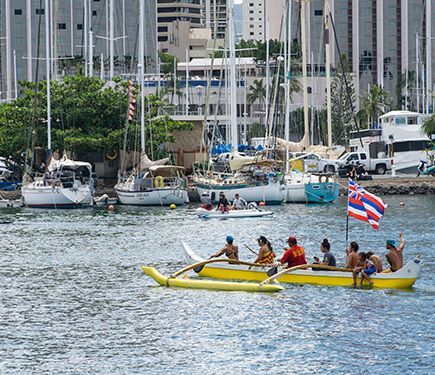
Then, finally, with sails proudly unfurled and taut in the wind, Hōkūle‘a and her crew entered the channel escorted by jetskis and surrounded by a fleet of canoes, smaller boats and SUPs. During the wait, waves had steadily grown in size as they crashed higher and higher onto the rocks. Now, they seemed to help Hōkūle‘a in its final steps of the journey home. Cheers, shaka signs, waves, hailing conch shells and Hawaiian flags flapping in the air followed Hōkūle‘a’s wake as she made her way to the floating dock. Strangely, as she reached the dock, the waves seemed to die down to a calm lull. Hōkūle‘a was now safe at home after faithfully carrying her crew on a groundbreaking ocean voyage.
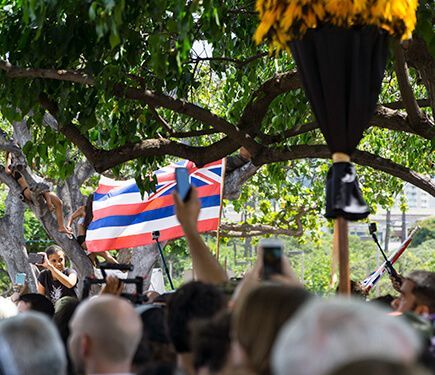
MĀLAMA HONUA FAIR & SUMMIT
It was no time for rest as Hōkūle‘a docked alongside the Hawaii Convention Center for the three-day Mālama Honua Fair & Summit. Tours were available so people could board the vessel and get a feel for the space that the crew lived in for weeks on end. According to a press release, there was a total of 245 crew members who rotated over the three-year journey. The crew was small on shorter legs, large on longer legs.
Inside, the public could wander among educational exhibits and hands-on demos, all with the message of Hōkūle‘a’s mission—Mālama Honua, to care for our Island Earth. While looking at a picture of the innards of an octopus, I met Haunani, a young woman who had been on the last leg of Hōkūle‘a’s travels from Tahiti to Hawai‘i.
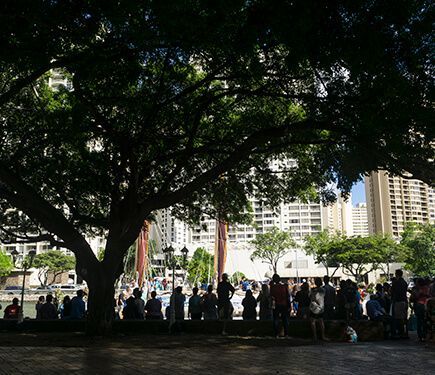
Her focus was conducting scientific experiments, studying and documenting what she and her fellow crew found in the stomachs of fish and other marine life. Plastic? Surprisingly, out of maybe 70 fish, she said about four to five had plastic in their stomachs (but don’t allow their findings to put you at ease; plastic in the ocean is a huge problem!). I asked if she had seen the Great Pacific Garbage Patch that I’d only read about. Haunani said they hadn’t seen it. But during one portion of their travels, she recalls plastic floating on both sides of the vessel.
I just had to ask the one question all women think of prior to any sort of long-distance travel: How did you use the bathroom? With a laugh, Haunani replied that there’s a designated spot on the Hōkūle‘a (near its name) with a plank. You need to clip yourself to the railing and step outside of it. Using one hand to hold the railing and the other to hold toilet paper, push away from the vessel with your legs when you’re ready to commit. Wow, way to get your heart going with a view! I wondered, but didn’t ask…where does the toilet paper go afterwards? TMI maybe.
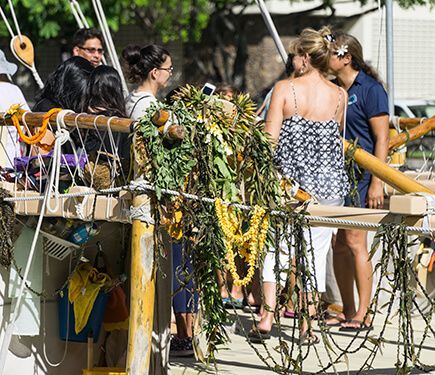
Haunani also mentioned days when the weather and wind were perfect so you could travel 5 mph. There were also days known as the doldrums, when there was no wind. All they could do was wait. And wait. No motor, no paddling. Just wait. And most spectacular of all, on clear nights, the stars above shone like crystals on a black canvas.
Training to become a navigator herself, Haunani’s most memorable moments were working side by side with the older members of the crew who shared their stories and experiences. The more I’ve thought about her answer since then, the more I can see the importance of hearing and learning from the elders in our communities. They are a treasure and have much to share. And though we may be moving away from the past with today’s technology, there is always room, and a need, for us to learn the ways of the past.
Another young woman who crewed Hōkūle‘a during the sail along the United States’ east coast shared her memorable moment as the day when she saw the Statue of Liberty. She had never seen it before, and to see it majestically standing on Ellis Island from the decks of the Hōkūle‘a made it that much more special.
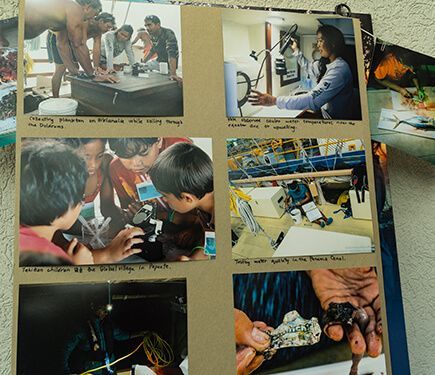
Some tidbits: Throughout their journey, crew members conducted Q&A sessions with numerous schools via satellite and kept communications going with the help of photovoltaic panels. The two hulls of the Hōkūle‘a are deep and that’s where canned foods and sleeping pads were stored; it’s also where the crew slept when it rained. The crew also caught fish, and thanks to people along the way, they also enjoyed fresh vegetables, fruits and even grass-fed beef!
Wherever they went, the crew visited classrooms and met with dignitaries such as His Holiness The Dalai Lama, Archbishop Desmond Tutu, UN Secretary General Ban Ki-moon and Dr. Sylvia Earle, a National Geographic Society Explorer-in-Residence, among others.
Their mission, to share the message of Mālama Honua, to take care of Island Earth. It’s a message of sustainable living for people of all ages, backgrounds, cultures, ethnicities and religions. But mostly, it’s a message for youths who will inherit this Island Earth.
Now home, Hōkūle‘a is scheduled for a well-deserved cleaning in dry dock. She’ll then sail to the rest of the Hawaiian Islands to continue sharing her inspiring journey.
There’s so much to know about Hōkūle‘a’s history, as well as the background of the Polynesian Voyaging Society started by great leaders in Hawaiian culture. You can read more about it at hokulea.com.
So are you itching to experience ocean exploration? Well, before you go on an adventure, it’s best to learn some basic seafaring skills so you won’t be thrown off the plank for not contributing. If you’re interested and have the commitment, Honolulu Community College, in partnership with the Polynesian Voyaging Society (PSV), is offering non-credit basic crew member training from July in which you’ll learn about the history of the PSV, parts of the canoe, seamanship and the basics of navigation. No sailing is involved at the beginner’s level, but if you’re selected to continue on, your future just may find you navigating a course under a night sky with the help of the Four Star Families (you’ll learn about it). Call to register: (808) 845-9296. Classes will be ongoing, so call for info even if you can’t attend the July classes.
Be inspired to learn & do!
Sarah

